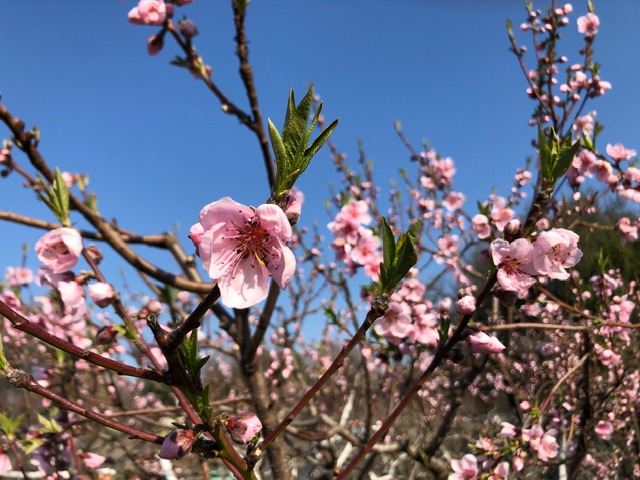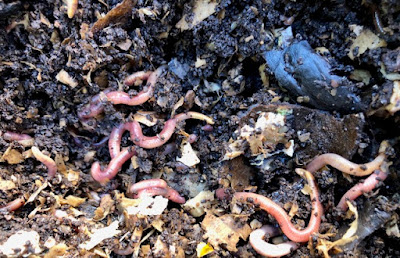
Master gardeners host February Open Garden on Saturday

|
|
If the Eva's Pride peach tree is blooming, can spring be far off? The Fair Oaks Horticulture
Center orchard trees are just beginning to show off their blossoms. (Photos: Kathy Morrison)
|
We all want rain, but might as well enjoy the sunny days we have, right? No better opportunity arrives than on Saturday, Feb. 12, when the Sacramento County master gardeners present their February Open Garden.
Open Garden Day gives visitors access to the entire Fair Oaks Horticulture Center, which is just south of Fair Oaks Park at 11549 Fair Oaks Blvd. The FOHC is the master gardeners' demonstration garden, but usually just the front portion -- the Water Efficient Landscape, or WEL -- is open daily to the public.
But all the gates will be open Saturday, from 9 a.m. to noon, and visitors will be able to see how the warm late-winter weather is affecting the various growing areas. Master gardeners will staff each area and answer gardening questions.
In the orchard, the Eva's Pride peach tree leads the way in blooming. Expect to see those beautiful pink blossoms abuzz with bees.

|
|
Visit the worms at the compost area of the Fair Oaks Horticulture
Center.
|
In the compost area, the master gardeners can tell all about worm composting while they're harvesting castings from the big bin full of red wigglers.
Other areas to visit include the berry garden -- where the blueberries have just been pruned -- the vegetable area, the herb garden and the vineyard.
For questions that don't quite fit into those areas, stop at the Ask a Master Gardener table, where they have all sorts of resources for backyard gardeners.
The 2022 Garden Guide will be for sale, $10 for invaluable growing information and a great calendar.
For general information on the Fair Oaks Horticulture Center, go to sacmg.ucanr.edu/?calitem=516810
Can't make this event? The next Open Garden will be March 12.
-- Kathy Morrison
Comments
0 comments have been posted.Sacramento Digs Gardening to your inbox.
Sites We Like
Garden Checklist for week of July 21
Your garden needs you!
* Keep your vegetable garden watered, mulched and weeded. Water before 8 a.m. to reduce the chance of fungal infection and to conserve moisture.
* Feed vegetable plants bone meal, rock phosphate or other fertilizers high in phosphate to stimulate more blooms and fruiting. (But wait until daily high temperatures drop out of the 100s.)
* Don’t let tomatoes wilt or dry out completely. Give tomatoes a deep watering two to three times a week.
* Harvest vegetables promptly to encourage plants to produce more. Squash especially tends to grow rapidly in hot weather. Keep an eye on zucchini.
* Pinch back chrysanthemums for bushy plants and more flowers in September.
* Remove spent flowers from roses, daylilies and other bloomers as they finish flowering.
* Pinch off blooms from basil so the plant will grow more leaves.
* Cut back lavender after flowering to promote a second bloom.
* It's not too late to add a splash of color. Plant petunias, snapdragons, zinnias and marigolds.
* From seed, plant corn, pumpkins, radishes, winter squash and sunflowers.